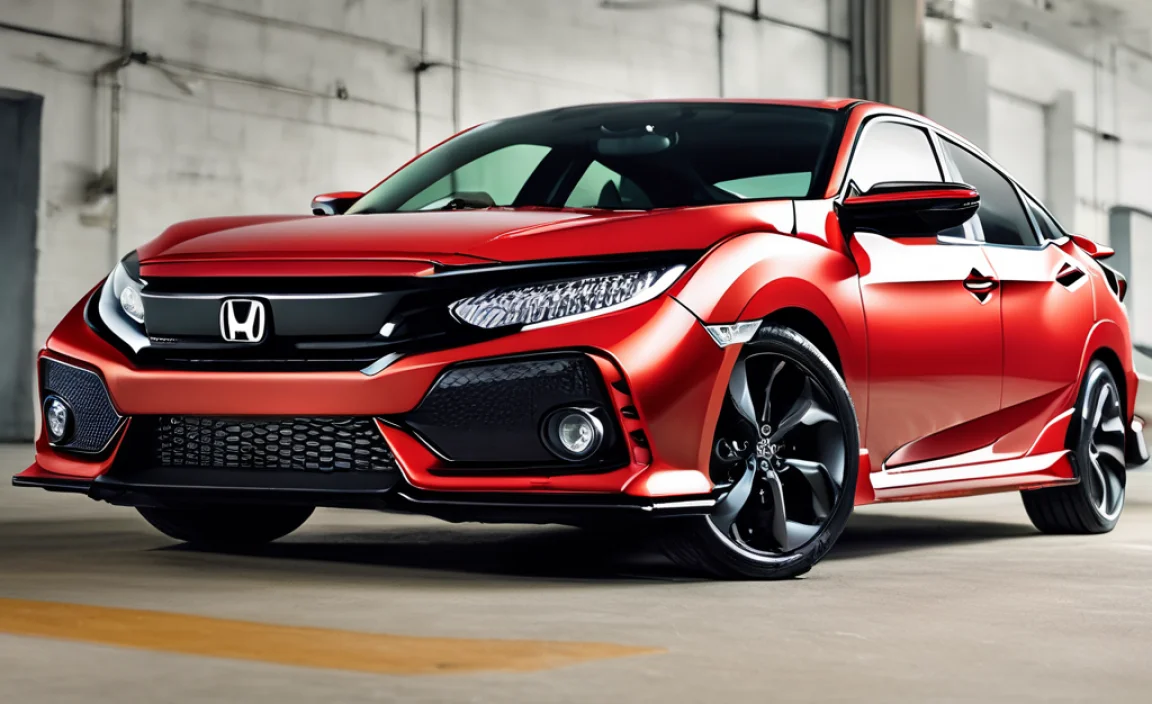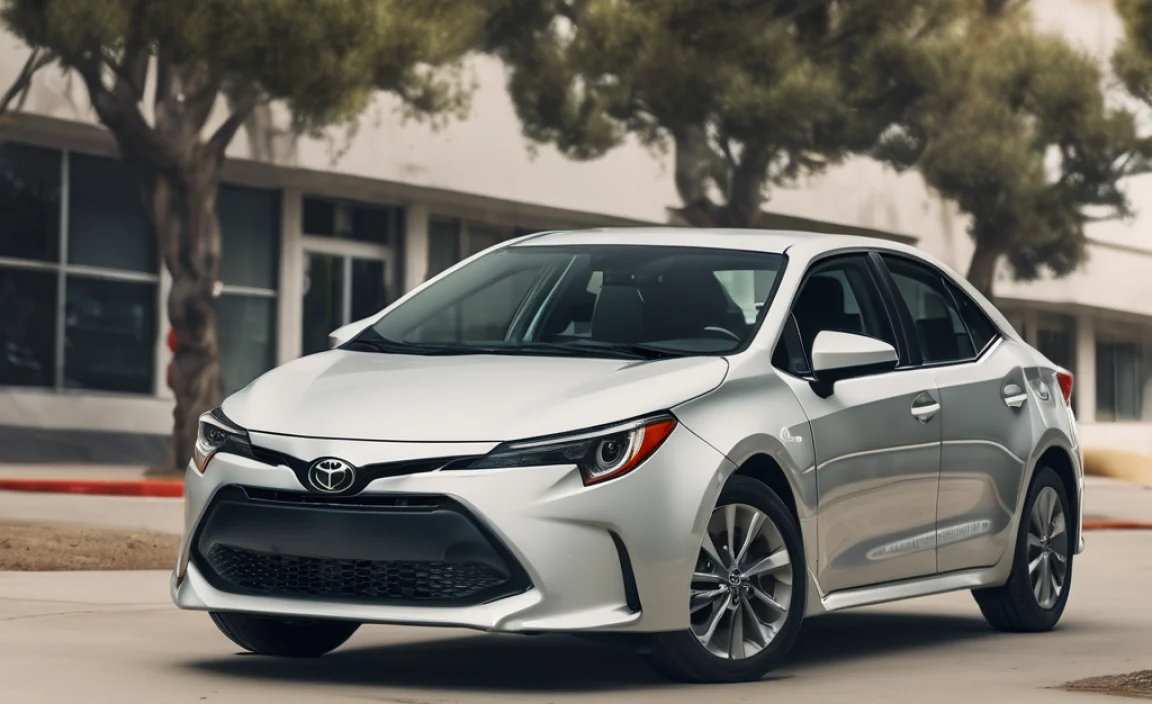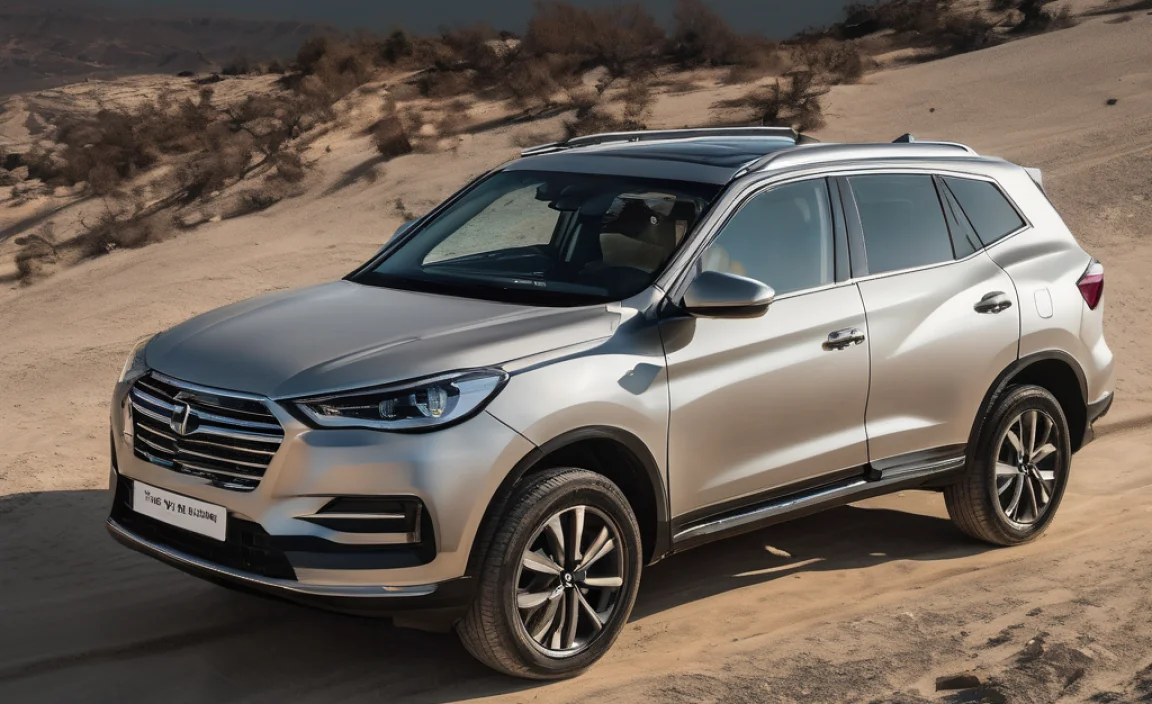Yes, a 12-volt battery is essential for starting and powering your Champion generator, acting as its “heart.” This guide explains how to choose, connect, and maintain the right 12V battery to keep your generator reliable and ready when you need it most. Essential power is within your reach, even if you’re new to generators.
Ever been in a situation where you desperately needed power, only to find your generator wouldn’t even sputter to life? It’s a frustrating feeling, especially when you’re relying on that backup punch. Often, the culprit isn’t a major generator issue, but a simple, overlooked piece: the 12-volt battery. Think of it as the starter switch for your generator’s engine. Without a good battery, the engine won’t turn over, and no power will be generated. Don’t worry if this sounds complicated; I’m here to break it down. We’ll cover everything you need to know about selecting the perfect 12V battery for your Champion generator, keeping things simple and stress-free.
Why Your Champion Generator Needs a 12-Volt Battery
Your Champion generator is a marvel of engineering, designed to provide reliable power when the grid goes down. But like any engine, it needs a little push to get going. That’s where the 12-volt battery steps in. It’s not powering your appliances directly; instead, it’s a crucial component for the generator’s ignition system. When you press the start button or turn the key, the battery sends a jolt of electricity to the starter motor. This motor then cranks the generator’s engine, allowing it to fire up and begin producing usable electricity.
Think of it like starting your car. Your car has a 12V battery that kicks the engine to life. Your generator operates on a similar principle, especially models designed for electric start. Many Champion generators, particularly the portable inverter generators and some larger units, come equipped with electric start features that rely on a 12V battery. Even for those with a recoil (pull) start, a 12V battery might be needed for other onboard electronics, like digital displays or automatic voltage regulators, depending on the generator model.
The Role of the Battery in Electric Start Generators
For generators with an electric start function, the 12V battery is absolutely indispensable. Here’s a quick rundown of what it does:
- Powers the Starter Motor: This is its primary job. The battery delivers a high surge of current to the starter motor, which physically turns the engine’s crankshaft.
- Powers the Ignition System: Once the engine is turning, the battery also helps energize the spark plug, creating the spark that ignites the fuel.
- Runs Onboard Electronics: Many modern generators have digital displays to show fuel levels, wattage output, or runtime. These displays, as well as other control circuits, are often powered by the 12V battery.
- Charges Itself: Importantly, your generator has an alternator or charging system that recharges the 12V battery as the generator runs. This means you don’t typically need to worry about external charging while the generator is in operation.
If your generator is intended for electric start and the battery is dead or missing, the generator simply won’t start or operate its electronic features. For those with manual pull-start, the battery’s role might be less critical for basic engine ignition, but it’s still vital for the generator’s brain – the control panel and power regulation systems.
Identifying the Right 12-Volt Battery for Your Champion Generator
Choosing the correct 12V battery is like picking the right tool for a job – using the wrong one can lead to all sorts of problems. Fortunately, Champion makes it fairly straightforward. The essential piece of information you need is your specific generator model number.
Where to Find Your Generator Model Number
The model number is your golden ticket to finding the correct battery. You can usually find it in a few key places:
- The Generator Itself: Look for a sticker or plate on the main body or frame of the generator. It’s often near the engine or control panel.
- The Owner’s Manual: This is the best place to look! Your manual will clearly state the recommended battery specifications and often the exact part number if Champion sells them directly.
- The Old Battery: If your old battery is still in place, check its label. It will have crucial information like its size, type, and sometimes even the recommended replacement part number.
Key Battery Specifications to Consider
Once you have your model number, you’ll be looking for a battery with specific characteristics. Don’t let terms like “CCA” or “Ah” intimidate you; they’re just ways to measure a battery’s power and capacity.
- Battery Type: Most generators use a Sealed Lead-Acid (SLA) battery. These are often referred to as AGM (Absorbent Glass Mat) or Gel batteries. They are spill-proof and maintenance-free, which is perfect for portable equipment. You’ll generally want an AGM type for its durability.
- Voltage: This is a no-brainer for this topic – it’s 12 Volts. Almost all generator starter batteries are 12V.
- Capacity (Amp-Hours or Ah): This tells you how much power the battery can store and deliver over time. A higher Ah rating means the battery can power things for longer. Your generator manual will specify the recommended Ah rating. Common ratings are around 12Ah to 20Ah for smaller to medium portable generators.
- Cold Cranking Amps (CCA): This measures the battery’s ability to deliver a burst of power to start an engine in cold weather. While not as critical for a generator that’s often stored in milder temps, it’s still a good indicator of a battery’s power output. Your manual will provide a minimum CCA requirement.
- Physical Size and Terminal Type: Make sure the new battery physically fits in the battery compartment of your generator. Also, check the terminal type (e.g., F2, F1) to ensure your generator’s cables will connect properly.
Champion Generator Battery Specifications Table (Example)
To give you an idea, here’s a typical example of what you might find. Your specific model might differ, so always check your manual or the old battery.
| Specification | Typical Value for Champion Generators | Why It Matters |
|---|---|---|
| Voltage | 12 Volts | Standard for starting and onboard electronics. |
| Battery Type | Sealed Lead-Acid (SLA), often AGM | Maintenance-free, spill-proof, durable. |
| Capacity (Ah) | 12Ah – 20Ah | Determines how long accessories can be powered and how reliably the engine can be cranked. |
| Cold Cranking Amps (CCA) | 150A – 250A (or higher) | Ensures strong starting power, especially in cooler conditions. |
| Terminal Type | F2 (0.25″ spade terminals) is common | Must match the connectors on your generator’s cables. |
| Dimensions | Varies significantly by model | Must physically fit within the designated battery housing. |
When in doubt, checking the Champion Power Equipment website or contacting their customer support with your generator model number is always a safe bet. They can confirm the exact battery specifications or even recommend a direct replacement part number.
Where to Buy a 12-Volt Battery for Your Champion Generator
You have several good options when it’s time to purchase a new 12V battery for your Champion generator. The best choice often depends on how quickly you need it and whether you’re looking for specific brands or the lowest price.
Online Retailers
Websites like Amazon, Batteries Plus Bulbs (online store), or even specialized battery e-commerce sites offer a vast selection of 12V SLA/AGM batteries. You can often find batteries from reputable brands like Yuasa, MightyMax Battery, or EverStart. The advantage here is sheer variety and competitive pricing. You can usually filter by voltage, Ah, CCA, and physical dimensions to find a perfect match. Just double-check the return policies and warranty information before buying.
Local Auto Parts Stores
Stores like AutoZone, Advance Auto Parts, O’Reilly Auto Parts, or your local NAPA store are great resources. They often stock a range of 12V SLA batteries that are compatible with generators. The benefit of shopping locally is that you can often get the battery the same day. Plus, their associates can sometimes help you match the old battery’s specifications if you bring it with you or provide your generator model.
Battery Specialists
Think of places that only sell batteries. These can be invaluable. They might have a wider selection of specific types and brands and possess deeper knowledge. If you’re struggling to find a specific size or type, a battery specialist is often your best bet.
Directly from Champion or Authorized Dealers
You can always purchase a replacement battery directly from Champion Power Equipment or an authorized Champion dealer. This guarantees you get the exact part specified for your generator, eliminating any guesswork. However, this might sometimes be more expensive than aftermarket options.
Pro Tip: When buying online, always verify the seller’s reputation and read customer reviews. For local purchases, bring your old battery or its specifications carefully written down to ensure a correct match.
How to Replace the 12-Volt Battery in Your Champion Generator
Replacing the battery in your Champion generator is usually a straightforward DIY task. It’s similar to changing a car battery, but on a smaller scale. Safety first – always disconnect the generator from any power source and ensure it’s turned off and cool before you begin.
Tools You Might Need
Gather these items before you start:
- Your new 12V battery
- Socket wrench set (common sizes like 10mm, 12mm, or 13mm often fit battery terminal nuts and mounting brackets)
- Wire brush or battery terminal cleaner
- Work gloves (to protect your hands)
- Safety glasses (to protect your eyes from any possible sparks or debris)
- Terminal protectant spray (optional, but recommended)
Step-by-Step Replacement Guide
Here’s how to safely swap out the battery:
- Locate the Battery: On most Champion generators, the battery is housed in a compartment, often accessible via a small panel or cover. Check your owner’s manual if you can’t find it. Ensure the generator is stable and won’t tip over.
- Disconnect the Cables: This is the most critical step for safety. Always disconnect the negative (-) terminal first. This is usually the black cable and has a ‘-‘ symbol next to it. Use your wrench to loosen the nut on the terminal clamp and carefully pull the cable off the battery post. Next, disconnect the positive (+) terminal, which is usually red and marked with a ‘+’. Loosen its clamp and remove the cable, being careful not to let it touch any metal parts of the generator.
- Remove the Old Battery: If the battery is held in place by a bracket or strap, unscrew or unbuckle it. Carefully lift the old battery out of its compartment. Batteries can be heavier than they look, so lift with your legs!
- Clean the Battery Tray and Cables: Use a wire brush to clean any corrosion from the battery tray and the inside of the cable clamps. Clean battery terminals ensure a good connection. You can find specific battery terminal cleaners at auto parts stores.
- Install the New Battery: Carefully place the new battery into the battery tray, ensuring it’s oriented correctly so the positive and negative terminals face their respective cables. Reinstall any mounting brackets or straps to secure the new battery firmly.
- Connect the Cables: Reconnect the positive (+) terminal first. Place the red cable clamp onto the positive terminal post and tighten the nut securely with your wrench. Then, connect the negative (-) terminal with the black cable, tightening its nut. Ensure both connections are snug but don’t overtighten, which could damage the terminal.
- Test the Generator: Once the battery is securely connected, you can proceed to test your generator. Follow the normal startup procedure for your Champion generator. For electric start models, try the start button. You should hear the engine crank, and if all is well, it will fire up.
Important Safety Reminder: If you see significant corrosion (a powdery white or greenish substance) on your old battery terminals or cables, wear gloves and be extra careful. Clean it thoroughly. Never let the positive and negative battery cables touch each other or any metal parts of the generator simultaneously, as this can cause a short circuit and sparks.
Understanding Battery Charging Systems
Most modern Champion generators with a 12V battery have an integrated charging system managed by the generator’s alternator. This means that as the generator runs, it automatically recharges the battery. You usually don’t need to manually charge the battery unless the generator has been sitting unused for a very long time, and the battery has self-discharged significantly.
For long-term storage (several months), it’s good practice to check the battery’s charge. If it’s low, you can use a compatible 12V automatic battery charger. When selecting a charger, ensure it’s designed for sealed lead-acid (AGM or gel) batteries and has an appropriate amperage output (typically 1A to 5A for maintenance charging). Ensure the charger is designed for 12V systems. You can often find these trickle chargers or battery maintainers at auto parts stores or online.
According to the U.S. Department of Energy’s Alternative Fuels Data Center, vehicle charging systems (which are similar to generator charging systems for their 12V components) are designed to maintain, not rapidly charge, a healthy battery. So, while your generator keeps the battery topped up during use, a dedicated charger is best for deeper charging or maintenance during storage.
Maintaining Your 12-Volt Battery for Longevity
A little bit of care can go a long way in extending the life of your Champion generator’s 12V battery. These batteries, especially the SLA/AGM types, require less maintenance than older flooded batteries, but there are still key practices to follow.
Regular Checks
- Visual Inspection: Periodically check the battery for any signs of damage, swelling, or leakage. Ensure cables are firmly connected and free of excessive corrosion.
- Terminal Cleaning: If you notice corrosion, clean the terminals as described in the replacement section. This ensures optimal power transfer.
- Battery Age: Like all batteries, 12V batteries have a lifespan. Typically, an SLA/AGM battery can last anywhere from 3 to 5 years, sometimes longer with good care, or shorter if frequently deeply discharged or exposed to extreme temperatures. If your generator’s battery is over 5 years old and you’re experiencing starting issues, it might be time for a proactive replacement.
Understanding Discharge and Recharging
- Avoid Deep Discharges: While the generator’s charging system should keep the battery topped up, if you are using accessories that draw power from the generator’s 12V output (if it has one) or if the electric start is failing frequently, you might be pushing the battery too hard. Deeply discharging a lead-acid battery can shorten its lifespan. Most electric-start generators are designed to start the engine and then rely on the alternator for immediate recharging.
- Storage Best Practices: If you store your generator for extended periods (more than a month), it’s a good idea to connect it to a smart trickle charger or battery maintainer. These devices keep the battery at an optimal charge level without overcharging it. This is crucial because a self-discharged battery can be damaged if left too long in a low-charge state, especially in cold conditions.
- Temperature Extremes: Avoid storing your generator and its battery in extreme heat or cold. High temperatures can degrade the battery faster, while extreme cold can reduce its capacity and potentially damage it if it’s not fully charged.
By following these simple maintenance tips, you can ensure your Champion generator’s 12V battery remains healthy and ready to provide that essential starting power whenever you need it.
Troubleshooting Common 12-Volt Battery Issues
Even with the best care, you might encounter a few snags. Here are some common issues and how to tackle them.
Generator Won’t Crank or Start
- Check Connections: First, ensure the battery cables are clean and tightly secured to the battery terminals. Loose or corroded connections are a very common cause of no-start issues.
- Test the Battery Voltage: If you have a multimeter, you can



